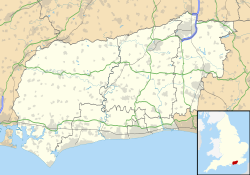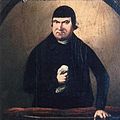This article needs additional citations for verification .(January 2014) |
| Burgess Hill URC | |
|---|---|
| All Saints United Reformed Church, Burgess Hill | |
 Burgess Hill URC from the front | |
| 50°57′14″N0°07′30″W / 50.9539°N 0.1250°W | |
| Location | Burgess Hill, West Sussex |
| Country | England |
| Denomination | United Reformed Church |
| History | |
| Founded | 1881 |
| Dedication | All Saints |
All Saints Church is the United Reformed Church in Burgess Hill. Originally a Congregational church, it replaced Burgess Hill's first Congregational chapel in Grove Road. It was registered as Junction Road Church.
It is a Classical building with a large portico and columns — an unusual style for such a late construction date (1881).
John Betjeman thought it was the Burgess Hill's only decent piece of architecture.
The exterior was painted in 1986, and the pews were removed in 2001. [1]



